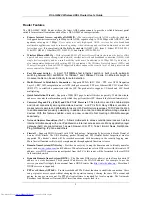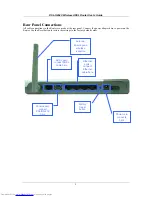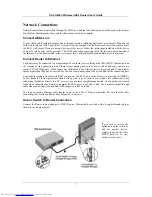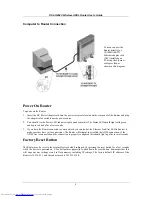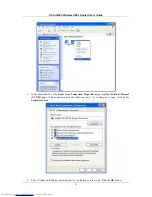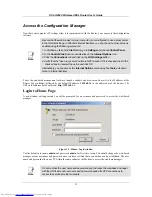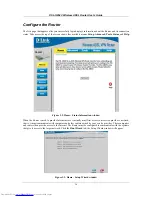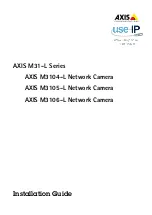
DSL-G804V Wireless ADSL Router User’s Guide
1
Introduction
This section provides a brief description of the Router, its associated technologies and a list of Router features.
Router Description and Operation
The DSL-G804V Wireless ADSL Router is designed to provide a simple and cost-effective ADSL Internet
connection for individual computers through the Ethernet ports, or use it to bridge your Ethernet LAN to the
Internet. The DSL-G804V combines the benefits of high-speed ADSL technology and LAN IP management in
one compact and convenient package. ADSL technology enables many interactive multi-media applications such
as video conferencing and collaborative computing.
The Router is easy to install and use. The DSL-G804V connects to computers or an Ethernet LAN via a standard
Ethernet interface. The ADSL connection is made using ordinary twisted-pair telephone line with standard
connectors. Multiple PCs can be networked and connected to the Internet using a single Wide Area Network
(WAN) interface and single global IP address.
It supports the latest ADSL2/2+ technology enabling high-speed data rates of up to 24Mbps, Its powerful QoS
feature for traffic priority and bandwidth management, and security features including multiple VPN tunnels
with 3DES make the device a perfect mate to the office user or for anyone who has the compelling needs to
transmit sensitive data more securely. With integrated 54Mbps 802.11g Access Point in this device, the router
brings up the productivity and mobility to office users.
The Router supports transparent bridging and can be used for IP packet routing over the Internet. Cost saving
features of the Router such as NAT (Network Address Translator) and DHCP (Dynamic Host Configuration
Protocol) improve administration efficiency and improve security for your private network.
What is ADSL?
Asymmetric Digital Subscriber Line (ADSL) is an access technology that utilizes ordinary copper telephone
lines to enable broadband high-speed digital data transmission and interactive multimedia applications for
business and residential customers.
ADSL greatly increases the signal carrying capacity of copper telephone lines without interfering with regular
telephone services. For the ADSL user, this means faster downloads and more reliable connectivity. ADSL
devices make it possible to enjoy benefits such as high-speed Internet access without experiencing any loss of
quality or disruption of voice/fax telephone capabilities.
ADSL provides a dedicated service over a single telephone line operating at speeds of up to 8 Mbps downstream
and up to 640 Kbps upstream, depending on local telephone line conditions. A secure point-to-point connection
is established between the user and the central office of the service provider.
D-Link ADSL devices incorporate the recommendations of the ADSL Forum regarding framing, data format,
and upper layer protocols.
1










